Because the contours are defined by polygons, the contour lines may not exactly follow the edges of the image pixels, but cut across the pixel area. PMOD supports different ways of handling this situation. Consider a contour which was manually drawn in the interpolated image.
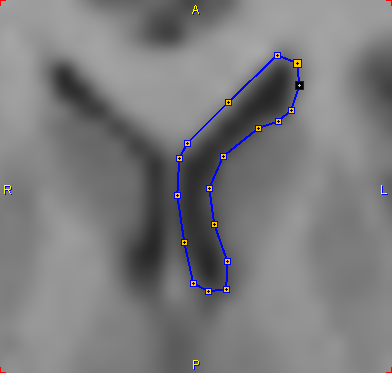
Switching interpolation off

shows how the contour lines intersect the pixel area.

Classification Selection
The list selection illustrated below allows choosing between the different classification modes.

The Fill mode can be used for visualizing the classification effect.

The G option represents the classified pixels as a grid, the A option as an area.
Fraction Mode (Area Weighting)
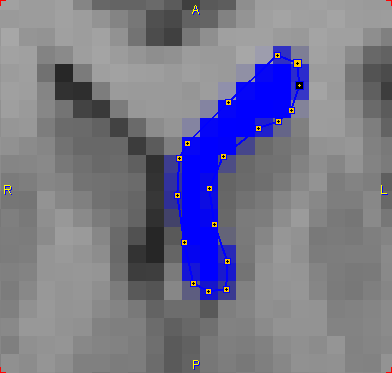
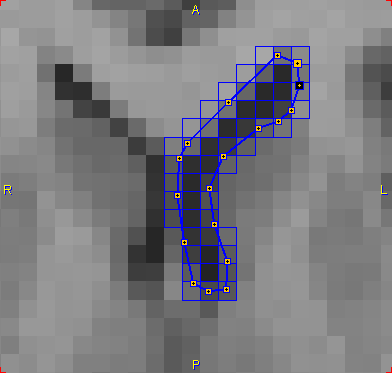
In Fraction mode, all pixels with any part enclosed by the contour are classified as VOI pixels. In statistics, the fractional area included is used as a weighting factor in the average calculation. Note that when the Fill A option is activated, the color intensity of a pixel corresponds to the included fraction.
Binary Mode (>50% inclusion)
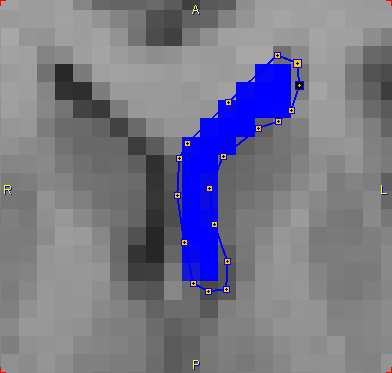
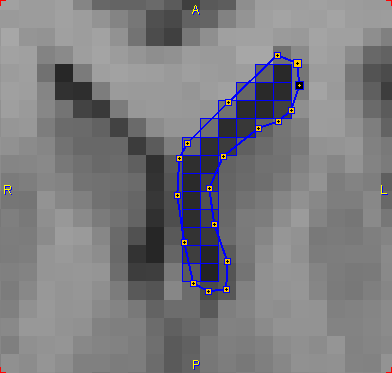
In >50% Binary mode, all pixels are included for which the enclosed area is >50% relative to the full pixel area. The statistics is unweighted using all classified pixels.
Binary Mode (100% inclusion)
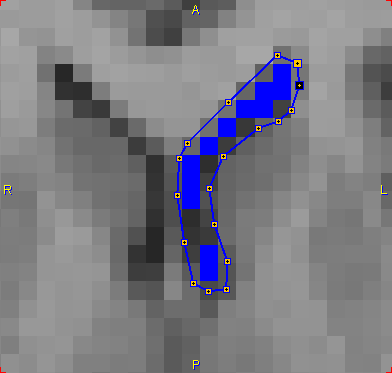
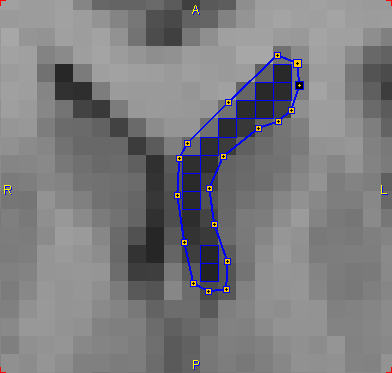
In 100% Binary mode, only fully enclosed pixels are included. The statistics is unweighted using all classified pixels.
Compatibility Mode (Versions <3.6)
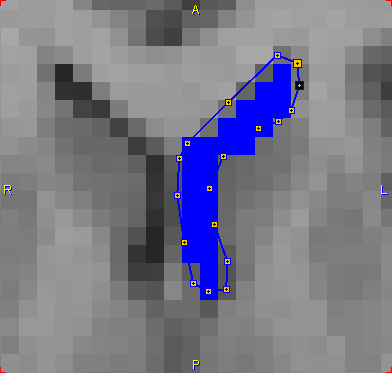
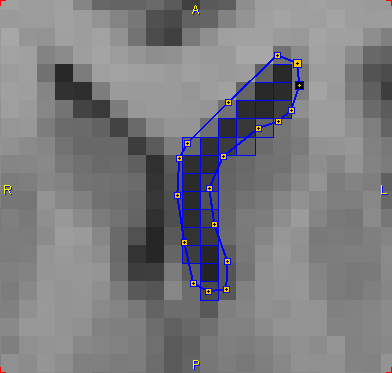
This classification has been used in PMOD versions before 3.6 and is available for compatibility.
Default Classification
The default VOI Classification mode to be used can be configured for each user as illustrated below.
